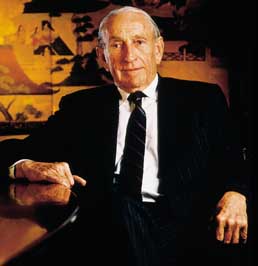11 Simple Rules For Getting Along With Others
One of the challenges for creating a culture of innovation within an organization is the ability to get along with others. Innovation is about constant change which is uncomfortable and stressful. The result is that some individuals/groups will not respond and actually become quite negative (corpora

One of the challenges for creating a culture of innovation within an organization is the ability to get along with others. Innovation is about constant change which is uncomfortable and stressful. The result is that some individuals/groups will not respond and actually become quite negative (corporate anti-bodies) to the innovation effort. What are you to do? How do you build a bridge to these individuals/groups? How do you get along with people who react so negativly to your ideas?
I was recently reading some of Bill and Dave's correspondence in the official HP archive and came across what is refereed to as the “11 Simple Rules”. “Elegant” and “timeless” are the best descriptions of the rules first presented by Dave Packard at HP's second annual management conference in 1958 in Sonoma, California.
I challenge you to read them and not find at least 3 or 4 areas that you can work on.
1. Think first of the other fellow. This is THE foundation – the first requisite – for getting along with others. And it is the one truly difficult accomplishment you must make. Gaining this, the rest will be “a breeze.”
2. Build up the other person's sense of importance. When we make the other person seem less important, we frustrate one of his deepest urges. Allow him to feel equality or superiority, and we can easily get along with him.
3. Respect the other man's personality rights. Respect as something sacred the other fellow's right to be different from you. No two personalities are ever molded by precisely the same forces.
4. Give sincere appreciation. If we think someone has done a thing well, we should never hesitate to let him know it. WARNING: This does not mean promiscuous use of obvious flattery. Flattery with most intelligent people gets exactly the reaction it deserves – contempt for the egotistical “phony” who stoops to it.
5. Eliminate the negative. Criticism seldom does what its user intends, for it invariably causes resentment. The tiniest bit of disapproval can sometimes cause a resentment which will rankle – to your disadvantage – for years.
6. Avoid openly trying to reform people. Every man knows he is imperfect, but he doesn't want someone else trying to correct his faults. If you want to improve a person, help him to embrace a higher working goal – a standard, an ideal – and he will do his own “making over” far more effectively than you can do it for him.
7. Try to understand the other person. How would you react to similar circumstances? When you begin to see the “whys” of him you can't help but get along better with him.
8. Check first impressions. We are especially prone to dislike some people on first sight because of some vague resemblance (of which we are usually unaware) to someone else whom we have had reason to dislike. Follow Abraham Lincoln's famous self-instruction: “I do not like that man; therefore I shall get to know him better.”
9. Take care with the little details. Watch your smile, your tone of voice, how you use your eyes, the way you greet people, the use of nicknames and remembering faces, names and dates. Little things add polish to your skill in dealing with people. Constantly, deliberately think of them until they become a natural part of your personality.
10. Develop genuine interest in people. You cannot successfully apply the foregoing suggestions unless you have a sincere desire to like, respect, and be helpful to others. Conversely, you cannot build genuine interest in people until you have experienced the pleasure of working with them in an atmosphere characterized by mutual liking and respect.
11. Keep it up. That’s all—just keep it up!
I couldn't have said it better. Just Keep It Up! Thanks David.
Phil McKinney Newsletter
Join the newsletter to receive the latest updates in your inbox.




